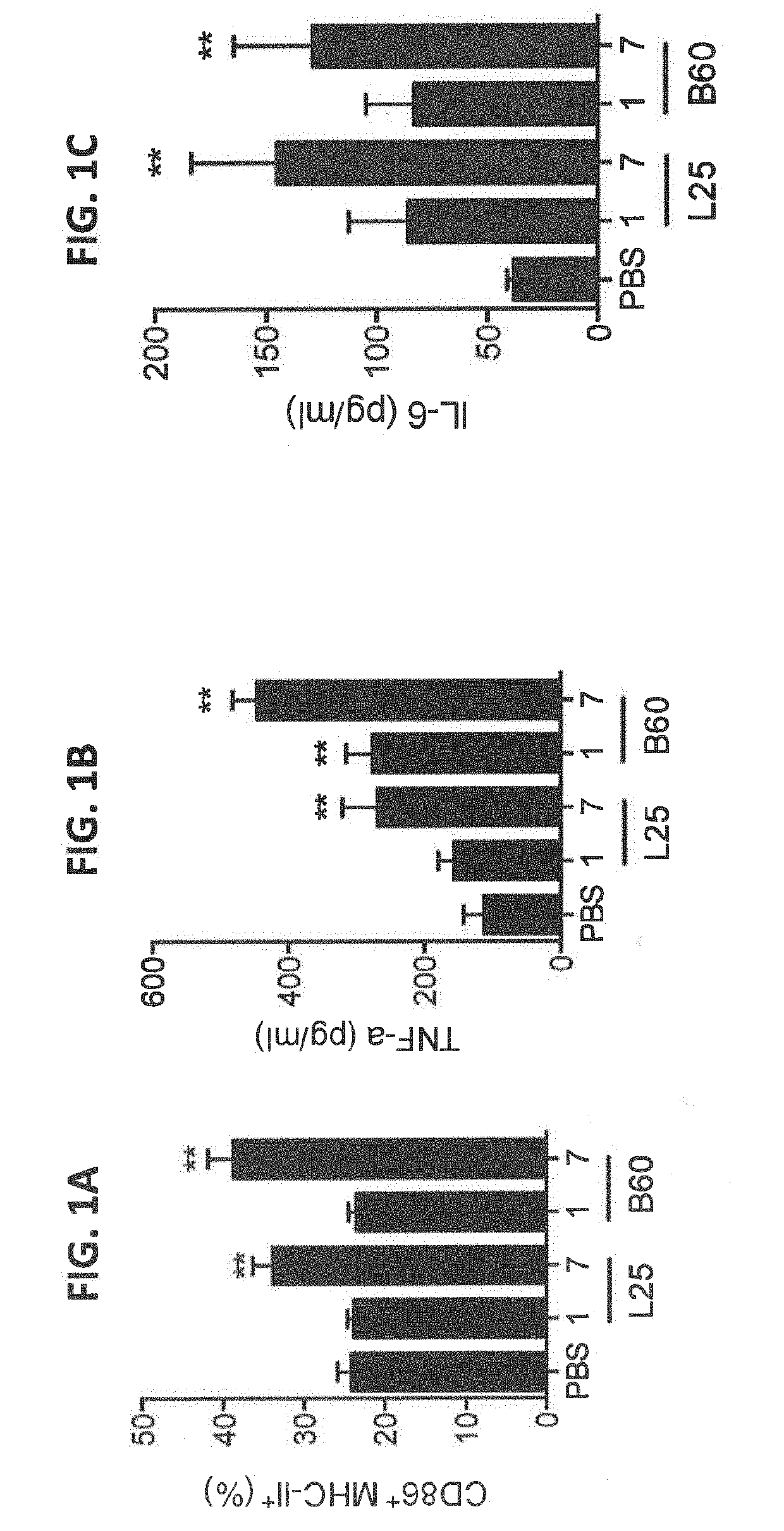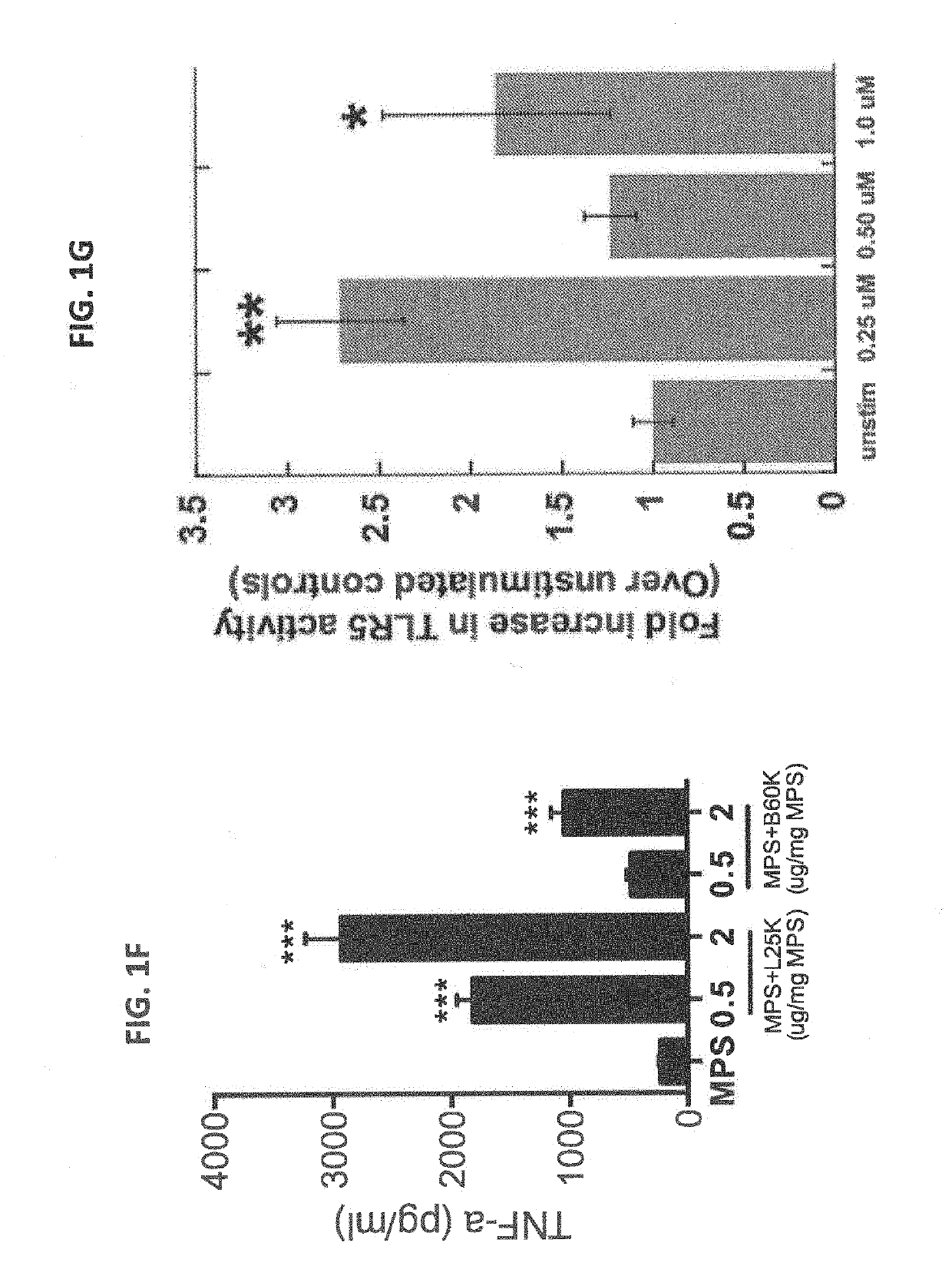Biomaterials for modulating immune responses
a technology of immune response and biomaterials, which is applied in the field of biomaterials for modulating immune responses, can solve the problems of slow research on using dendritic cells for therapeutic benefits, and achieve the effects of increasing the immunogenicity of a compound, increasing the production, and increasing the immunogenicity of the compound
- Summary
- Abstract
- Description
- Claims
- Application Information
AI Technical Summary
Benefits of technology
Problems solved by technology
Method used
Image
Examples
example 1
s Silica (MPS) Vaccine to Enhance Anti-Tumor Immunity
[0442]Biomaterials have shown substantial potential to integrate synergistically with current cancer vaccine strategies and enhance their effectiveness. We recently developed an injectable biomaterial vaccine via spontaneous assembly of mesoporous silica (MPS) microparticles into a 3D scaffold in vivo. When formulated with GM-CSF and CpG, the MPS vaccine modulates host dendritic cell (DC) activation and trafficking. Here we demonstrate that a single injection of the MPS vaccine induced persistent germinal center activity, e.g., in a draining lymph node, for over 30 days. Consequently, when immunized with a small linear Her2 / neu peptide within the Trastuzumab binding domain, the MPS vaccine elicited over 2 orders of magnitude higher IgG1 and IgG2a antibody titer compared to a bolus vaccine, and the antibody exhibited reactivity on the native Her2 structure on breast cancer cells. To further enhance CTL responses against tumor antig...
example 2
ide and Glycolide (PLG) Scaffolds Comprising PEI
[0443]Coating PLG scaffolds with polyethylenimine (PEI) enhances dendritic cell (DC) activation. Application of PEI to PLG systems prior to antigen adsorption enhances anti-tumor responses in cancer vaccine models.
[0444]PEI-loaded scaffolds promoted 3-4 fold increases in TLR5 activity over controls in vitro (FIG. 19A). In addition, murine DCs seeded onto PEI-PLG scaffolds produced over 3 times more IL-12 and almost 30 times more IFN-alpha than cells seeded onto scaffolds without PEI. (FIG. 19B). These results suggest that PEI modified PLG may locally activate DCs and other antigen presenting cells APCs, potentially via the TLR5 pathway.
[0445]Antigens from B16-F10 melanoma tumor lysates were adsorbed onto PEI-PLG systems to create cancer vaccines. Implantation of PEI-antigen coated vaccines into mice induced the local production of immunostimulatory cytokines in situ, including G-CSF, MIP-a, RANTES, KC, IL-2, MIP-1b, IL-12 (FIG. 20A). I...
PUM
| Property | Measurement | Unit |
|---|---|---|
| molecular weight | aaaaa | aaaaa |
| molecular weight | aaaaa | aaaaa |
| volume | aaaaa | aaaaa |
Abstract
Description
Claims
Application Information
 Login to View More
Login to View More - R&D
- Intellectual Property
- Life Sciences
- Materials
- Tech Scout
- Unparalleled Data Quality
- Higher Quality Content
- 60% Fewer Hallucinations
Browse by: Latest US Patents, China's latest patents, Technical Efficacy Thesaurus, Application Domain, Technology Topic, Popular Technical Reports.
© 2025 PatSnap. All rights reserved.Legal|Privacy policy|Modern Slavery Act Transparency Statement|Sitemap|About US| Contact US: help@patsnap.com



